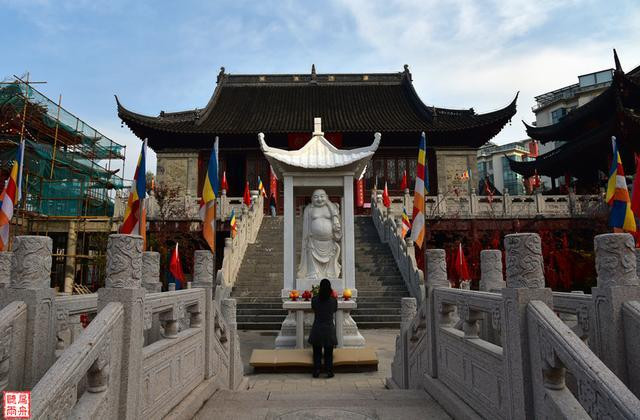Pilu Temple in Nanjing, the center of Buddhism in the country during the Republic of China
Pilu Temple is located at No. 4 Hanfu Street, Nanjing City. It was built during the Jiajing Period of the Ming Dynasty (1522-1566). It is named because the temple supports Pilu Zhana Buddha.

Piluchana Buddha is Sakyamuni's Dharmakaya Buddha. "Three-Body Buddha" is often mentioned in Buddhism, that is, the Dharmakaya "Virochana Buddha", the Dharmakaya Buddha ", and the Dharmakaya Buddha".

The relationship between these three Buddha statues is very wonderful. There is a subtle metaphor for this in Buddhism: the Dharmakaya Buddha is like the bright moon, the Samurai Buddha is like the moonlight, and the Samurai Buddha is like the shadow of the moon. It means that even if the water dries up and the shadow of the moon disappears, the moon still exists. That is to say, the Dharmakaya Virochana Buddha will always exist no matter what time it is.

The capital of the Republic of China was Nanjing. During the Republic of China, Nanjing Pilu Temple was the center of Buddhism in the country. The Chinese Buddhist Society, the Chinese Buddhist Research Society, the Chinese Religious Association, and the Capital Traditional Chinese Medicine Hospital were all located here.

Walking into the smoke-filled Pilu Temple, the tall ginkgo trees shine brightly in the sun. They are said to have been planted by Zeng Guoquan personally when he was governor of Liangjiang in Nanjing during the Guangxu period of the Qing Dynasty.


In its prime, Pilu Temple was the largest temple in Nanjing from the Forbidden City of the Ming Dynasty in the east, the Presidential Palace in the west, Zhujiang Road in the north, and Yangtze River Road in the south.



During the Cultural Revolution, all 3000 Buddha statues in Pilu Temple were lost, and the houses and halls were turned into factory workshops and warehouses. In the 1990s, with the support of the government, Pilu Temple began to be restored. In 2004, it was basically restored to its current appearance.


The Sutra Building located on the second floor of the Wanfo Building now houses the "Qianlong Sutra". In Chinese history, the "Da Sutra" is divided into multiple periods and versions, among which the Buddhist scriptures from the Yongle and Qianlong periods of the Qing Dynasty are the most valuable. This set from Pilu Temple in Nanjing is the Qing Dynasty engraved edition of Qianlong Dazheng Collection. The complete set has a total of 168 copies, and there are only 40 sets in the world.

At the time of the visit, facilities in the temple, including the Drum Tower, were still under maintenance. Today's scale is no longer the same as before.
Previous Article:A trip to Jinling
